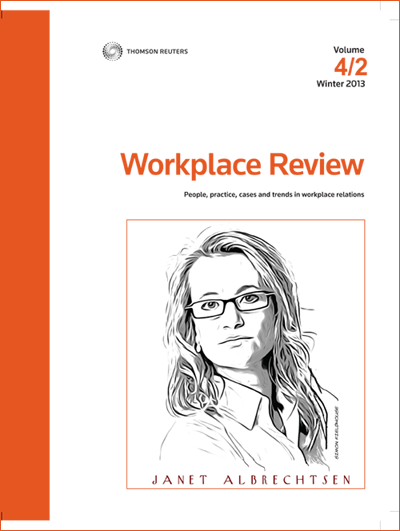An article I wrote and published in The Australian last Friday regarding the Law Council of Australia’s gender equitable briefing policy
An article I wrote and published in The Australian last Friday regarding the Law Council of Australia’s gender equitable briefing policy instantly provoked a media release from the Australian Bar Association’s president, Will Alstergren QC.
The ABA president, whom I have never met nor spoken to, stated that the views I expressed in the article “do not reflect the view of the Australian Bar Association”. I am glad he cleared that up.
However, I was somewhat perplexed as to why he would bother to issue such a missive. Perhaps I should be flattered. The article does not mention the ABA, nor does it purport to represent or misrepresent the ABA’s view. I have not served on the ABA executive nor on any committee.
The article, however, is critical of affirmative action and quotas for women barristers. I apologise Will for being a mere member in dissent.
The president goes on to state: “There is no evidence that the policy ‘takes work away’ from male barristers. To the contrary, we believe the policy will result in a larger pool of work for barristers, drawing in the expertise, skills and diversity of the Australian Bar.”
Such boosterism might be comforting to support the policy, but surely the briefs available to barristers are finite? More briefs to women barristers above their numerical number at the bar must mean less work for male barristers. Do the maths.
Despite my article sending the feminist legal Twittersphere aflutter , it provoked a number of supportive responses. A barrister sent this to me:
“An additional inequity is the fact that many of the female barristers advocating for and benefiting from these policies are more often than not from very wealthy and privileged backgrounds. Have never faced actual discrimination in their lives.
“I saw first hand a junior male barrister miss out on a brief based on gender. In addition to being the best person for the job, it just so happened he grew up in a singleparent household, his Mum was on welfare and he was the first person in his high school to make law school. The girl who got the brief was the daughter of a judge.”
A number of imperatives have been suggested to support the policy, these include earnings’ inequality between male and female barristers and the lesser number of women at the bar compared to the proportion of law school graduates.
If one accepts these matters as correct, and there certainly is a disparity in numerical strength of female members at the bar compared to those graduating from law schools, there may be many reasons for this occurrence.
Last year one senior junior female barrister contacted me to say that she could earn more at the bar but decided not to do so for family and social reasons.
Another was reported to say that she worked harder and longer at her legal work so she could afford to pay for an array of domestic staff including nannies, cleaners and cooks.
Two different responses but tailored to one’s own choice.
A barristers’ clerk wrote to me last week to say of her floor: “None of our female barristers charge any less than their male counterparts and in fact may charge more.”
She went on to say: “Obviously there are not as many very senior female commercial silks at the bar because often they are appointed to the bench early or appointed silk earlier than men which affects the income level.”
A female Sydney SC last week tweeted: “As a barrister of 21 years standing, I have no hesitation in expressing my preference to be briefed for my seniority, expertise and experience.”
In my chambers the busiest, hardest working barrister and probably the biggest earner is a female silk.
The bar is a tough place. A barrister is a sole trader. It is a competitive world. Success can be elusive at the bar but can be had.
Apparent disadvantages of background, gender, sexual preference or ethnicity, as I have written before in this paper, are overcome by brilliance, diligence and personality.
The Chief Justice of the High Court of Australia and two other justices on that court are women. They are not sitting there because of affirmative action or quotas but because they were leaders of eminence in their field.
Affirmative action and quotas are a blunt instrument and such a 1970s construct. An “insult to women” , as Camille Paglia said.
Maybe the ABA should send me to re-education camp.
Jeffrey Phillips SC is a Sydney barrister.
Copyright © 2017 The Australian


